 W
WThe Ambarri were a Gallic people, dwelling in the modern Ain region.
 W
WThe Ambiani were a Belgic coastal tribe, dwelling in modern Picardy during the La Tène and Roman periods. They are known for their gold coinage.
 W
WThe Andecavi were a Gallic tribe of ancient and early medieval Aremorica.
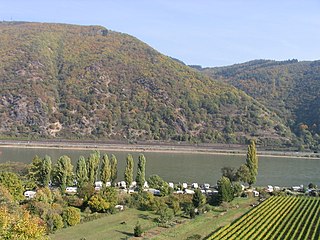 W
WThe Aresaces were Belgic tribe. They were closely related to, and probably originally part of, the Treveri. They inhabited the left bank of the Rhine in the Mainz-Bingen area, which was once the easternmost part of Treveran territory.
 W
WThe Armoricani were a tribe living in the area now called Brittany and all along the coast up to Dieppe in Normandy. They inhabited the area in the Iron Age, though there is plenty of evidence of earlier settlement in that part of Gaul. Strabo and Poseidonius describe the Armoricani as belonging to the Gaulish Belgae and according to Tacitus were ousted by the Germani cisrhenani.
 W
WThe Arverni were a Gallic tribe dwelling in the modern Auvergne region during the La Tène and the Roman periods. They were one of the most powerful tribes of ancient Gaul, contesting primacy over the region with the Aedui.
 W
WThe Atrebates were a Belgic tribe of the Iron Age and the Roman period, originally dwelling in the Artois region.
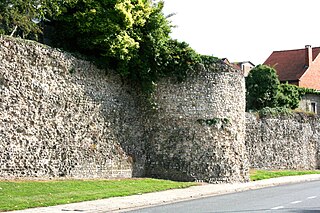 W
WAtuatuca was the name of one or more fortified settlements in the region between the Scheldt and Rhine rivers, during the "Gallic wars" of Julius Caesar. The word itself possibly meant "fortress". The pronunciation "Atuatuca" with a "t" is considered to be the original, despite many Latin documents using a "d". The modern city of Tongeren, referred to as Aduatuca Tungrorum in later Roman imperial times, is at least one of these places, and if there were more places with this same name they were all in the same general region to the north of the Ardennes, and in or near eastern Belgium. At the time, this region was inhabited mainly by the Eburones.
 W
WThe Belgae were a large confederation of tribes living in northern Gaul, between the English Channel, the west bank of the Rhine, and northern bank of the river Seine, from at least the third century BC. They were discussed in depth by Julius Caesar in his account of his wars in Gaul. Some peoples in Britain were also called Belgae and O'Rahilly equated them with the Fir Bolg in Ireland. The Belgae gave their name to the Roman province of Gallia Belgica and, much later, to the modern country of Belgium; today "Belgae" is also Latin for "Belgians".
 W
WThe Bellovaci were a Belgic tribe, dwelling in the modern Picardy region, near present-day Beauvais.
 W
WThe Bituriges Cubi were a Gallic tribe dwelling around their oppidum Avaricum. Their territory corresponds to the former province of Berry.
 W
WThe Bituriges Vivisci were one of the tribes of Gaul. The tribe's capital was in Burdigala, modern-day Bordeaux. The Vivisci traded wine which they produced themselves. Whether there was any link to the Bituriges Cubi of the Berry region is not known.
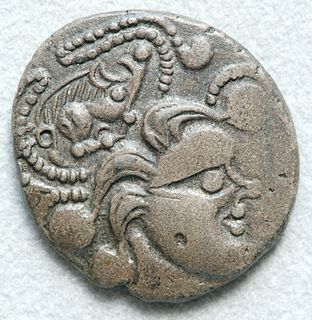 W
WThe Bodiocasses were an ancient Gallic tribe of the Roman period. They were a tribal division of the civitas of the Lexovii, in the Roman province of Gallia Lugdunensis.
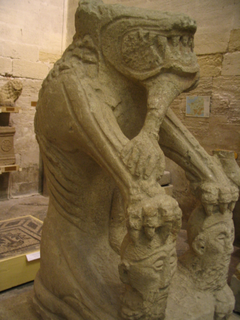 W
WThe Cavares were a Gallic confederation of tribes located in the lower Rhone valley during the Roman period. Their strongholds were Avignon (Avennio), Orange (Arausio) and Cavaillon (Cabellio).
 W
WThe Cenomani or Aulerci Cenomani were a Celtic people, a branch of the Aulerci in Gallia Celtica, whose territory corresponded generally to Maine in the modern départment of Sarthe, west of the Carnutes between the Seine and the Loire. Their chief town was Vindinum or Suindinum, afterwards Civitas Cenomanorum and later Cenomani as in the Notitia Dignitatum, the original name of the town, as usual in the case of Gallic cities, being replaced by that of the people. According to Caesar, they assisted Vercingetorix in the great rising with a force of 5000 men. Under Augustus they formed a civitas stipendiaria of Gallia Lugdunensis, and in the 4th century part of Gallia Lugdunensis III.
 W
WThe Ceutrones were a Gallic tribe of the La Tène and Roman periods. They controlled the Graian Alps regions of Gallia Viennensis Quinta in Gallia Narbonensis.
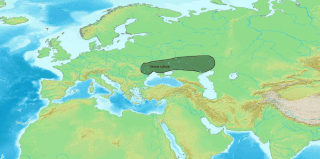 W
WThis is a list of Celtic tribes, organized in order of the likely ethnolinguistic kinship of the peoples and tribes. In Classical antiquity, Celts were a large number and a significant part of the population in many regions of Western Europe, Southern Central Europe, British Isles and parts of the Balkans, in Europe, and also Central Asia Minor or Anatolia.
 W
WThe Condrusi were one of the peoples described by Julius Caesar as Germani Cisrhenani. They survived the Roman invasion and lived in what is now eastern Belgium, during the Roman period.
 W
WThe Coriosolites or Curiosolitas were a Gallic people dwelling on the northern coast of present-day Brittany, in Celtica, who are mentioned by Julius Caesar several times.
 W
WThe Diablintes or Diablintres or Diablindi or Aulerci Diaulitae were an ancient people of Gaul, a division of the Aulerci. Julius Caesar mentions the Diablintes among the allies of the Veneti and other Armoric states whom Caesar attacked. The Diablintes are mentioned between the Morini and Menapii. The territory of the Diablintes seems to have been small, and it may have been included in that of the Cenomanni, or the former diocese of Mans.
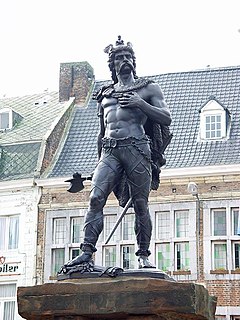 W
WThe Eburones, were a Gallic-Germanic tribe, dwelling in the northeast of Gaul, in what is now the southern Netherlands, eastern Belgium, and the German Rhineland, in the period immediately preceding the Roman conquest of the region. Though living in Gaul, they were also described as being both Belgae and Germani.
 W
WThe Eburovices, Aulerci Eburovices or Eburovici were a Gallic tribe, a branch of the Aulerci. They are mentioned by Julius Caesar with the Lexovii. Pliny speaks of the Aulerci, qui cognominantur Eburovices, et qui Cenomani. Ptolemy makes the Αὐλέρκοι Ἐβουραϊκοί extend from the Ligeris to the Sequana, which is not true. Their chief place was Mediolanum Aulercorum. Their limits correspond to those of the later diocese of Évreux, and they are north of the Carnutes.
 W
WThe Elusates were an Aquitani pre-Roman tribe settled in what today is southwestern France, in the northeast of the Aquitaine territory, around the city of Elusa, which is present-day Eauze, in the French department of Gers. They were subdued by Publius Crassus, legatus of Caesar in 56 BCE.
 W
WThe Gabali were a Gallic tribe from Gallia Aquitania, in the mountainous region, where the Oltis (Lot) and the Elaver (Allier) emerge. They were subject, and allied to the Averni. They are mentioned in Book VII of Caesar's Commentaries. During Caesar's conquest of Gaul they were raiding the country of the Provincial Ruteni, and they were among the tribes that sent relief troops to the Gallic army trying to break the siege in Alesia.
 W
WThe Helvii were a relatively small Celtic polity west of the Rhône river on the northern border of Gallia Narbonensis. Their territory was roughly equivalent to the Vivarais, in the modern French department of Ardèche. Alba Helviorum was their capital, possibly the Alba Augusta mentioned by Ptolemy, and usually identified with modern-day Alba-la-Romaine. In the 5th century the capital seems to have been moved to Viviers.
 W
WThe Insubres or Insubri were a Lepontic population settled in Insubria, in what is now the Italian region of Lombardy. They were the founders of Mediolanum (Milan). Though completely Gaulish at the time of Roman conquest, they were the result of the fusion of pre-existing Ligurian and Celtic population with Gaulish tribes.
 W
WThe Lingones were a Gallic tribe of the La Tène and Roman periods. They dwelled in the region surrounding the present-day city of Langres, between the provinces of Gallia Lugdunensis and Gallia Belgica.
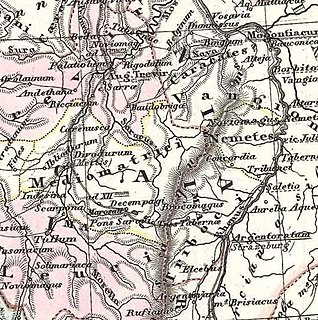 W
WThe Mediomatrici were a Belgic tribe, dwelling in the present-day Lorraine region.
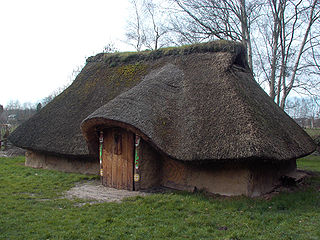 W
WThe Menapii were a Belgic tribe of northern Gaul in pre-Roman and Roman times. According to descriptions in such authors as Strabo, Caesar, Pliny the Elder and Ptolemy their territory had stretched northwards to the mouth of the Rhine in the north, but more lastingly it stretched along the west of the Scheldt river. In later geographical terms this territory corresponds roughly to the modern Belgian coast, the Belgian provinces of East and West Flanders. It also extended into neighbouring France and the river deltas of the Southern Netherlands.
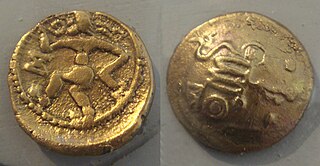 W
WThe Namnetes were a tribe of ancient Gaul, living in the area of the modern city of Nantes near the river Liger.
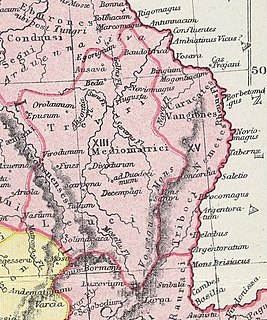 W
WThe Nemetes were a tribe settled along the Upper Rhine by Ariovistus in the 1st century BC. Their capital, Noviomagus Nemeton, was close to the site of medieval Speyer.
 W
WThe Nervii were one of the most powerful Belgic tribes of northern Gaul at the time of its conquest by Rome. Their territory corresponds to the central part of modern Belgium, including Brussels, and stretched southwards into French Hainault. During their 1st century BC Roman military campaign, Julius Caesar's contacts among the Remi stated that the Nervii were the most warlike of the Belgae. In times of war, they were known to trek long distances to take part in battles. Being one of the distant northern Belgic tribes, with the Menapii to the west, and the Eburones to their east, they were considered by Caesar to be relatively uncorrupted by civilization.
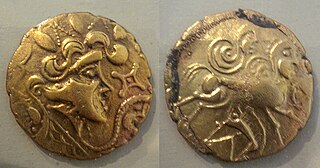 W
WThe Osismii were a Gaulish tribe on the western Armorican peninsula. They were first described as the Ostimioi by the Greek geographer and traveller Pytheas in the fourth century BC.
 W
WThe Parisii were a Gaulish tribe, dwelling on the banks of the river Seine during the Iron Age, from the middle of the 3rd century BC until the Roman era.
 W
WThe Pictones were a Gallic tribe of the La Tène and Roman periods, dwelling south of the Loire river, in the modern départements of Vendée, Deux-Sèvres and Vienne.
 W
WThe Remi were a Belgic tribe, dwelling in the Aisne, Vesle and Suippe river valleys, corresponding to the modern Marne and Ardennes and parts of the modern Aisne and Meuse départements.
 W
WThe Riedones were a Gallic tribe, dwelling around their capital Condate. Caesar mentions the Redones among the civitates maritimae or Aremoricae.
 W
WThe Ruteni were a Gallic tribe of the La Tène and Roman period, dwelling in the modern region of Aveyron. They were known as producers of lead.
 W
WThe Segusiavi were a Gallic tribe around the modern city of Feurs.
 W
WThe Senones or Senonii were an ancient Gallic tribe that dwelled in the Seine basin, around present-day Sens, in Caesar's time.
 W
WThe Suessiones were a Belgic tribe, dwelling in the modern Aisne and Oise regions during the La Tène and Roman periods.
 W
WThe Tigurini were a clan or tribe forming one out of four pagi (provinces) of the Helvetii. The Tigurini were the most important group of the Helvetii, mentioned by both Caesar and Poseidonius, settling in the area of what is now the Swiss canton of Vaud, corresponding to the bearers of the late La Tène culture in western Switzerland. Their name has a meaning of "lords, rulers". The other Helvetian tribes included the Verbigeni and the Tougeni, besides one tribe that has remained unnamed.
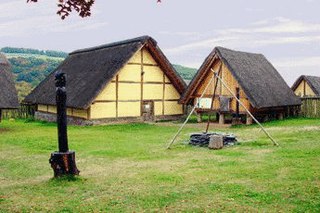 W
WThe Treveri or Treviri were a Celtic tribe of the Belgae group who inhabited the lower valley of the Moselle from around 150 BCE, if not earlier, until their displacement by the Franks. Their domain lay within the southern fringes of the Silva Arduenna, a part of the vast Silva Carbonaria, in what are now Luxembourg, southeastern Belgium and western Germany; its centre was the city of Trier, to which the Treveri give their name. Celtic in language, according to Tacitus they claimed Germanic descent. They possibly contained both Gallic and Germanic influences.
 W
WThe Tulingi were a small tribe closely allied to the Celtic Helvetii in the time of Julius Caesar's conquest of Gaul. Their location is unknown; their language and descent are uncertain. From their close cooperation with the Helvetii it can be deduced that they were probably neighbours of the latter. At the Battle of Bibracte in 58 BCE, they were, with the Boii and a few other smaller tribes, allies of the Helvetii against the Roman legions of Caesar.
 W
WThe Tungri were a tribe, or group of tribes, who lived in the Belgic part of Gaul, during the times of the Roman Empire. Within the Roman Empire, their territory was called the Civitas Tungrorum. They were described by Tacitus as being the same people who were first called "Germani" (Germanic), meaning that all other tribes who were later referred to this way, including those in Germania east of the Rhine river were named after them. More specifically, Tacitus was thereby equating the Tungri with the "Germani Cisrhenani" described generations earlier by Julius Caesar. Their name is the source of several place names in Belgium, Germany and the Netherlands, including Tongeren, Tongerlo Abbey, and Tongelre.
 W
WThe Turones were a Celtic tribe of pre-Roman Gaul, dwelling around modern-day Tours, in the Touraine region.
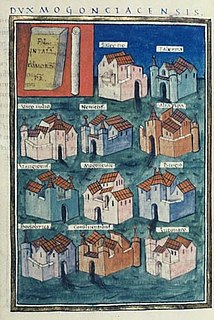 W
WThe Vangiones appear first in history as an ancient Germanic tribe of unknown provenance. They threw in their lot with Ariovistus in his bid of 58 BC to invade Gaul through the Doubs river valley and lost to Julius Caesar in a battle probably near Belfort. After some Celts evacuated the region in fear of the Suebi, the Vangiones, who had made a Roman peace, were allowed to settle among the Mediomatrici in northern Alsace.. They gradually assumed control of the Celtic city of Burbetomagus, later Worms.
 W
WThe Vellavi were a Gaulish people in the region of Le Puy-en-Velay in the region of the Auvergne, which, at the time of Julius Caesar's campaigns against the Gaul lay on the border of Gallia Narbonensis. The oppidum of Ruessium, an early seat of a Catholic bishop, began to be called during the 4th century the [civitas] que dicitur Vetula in pago Vellavorum— the city "called Vetula in the country ('pays') of the Vellavi" a document of 1004 termed it (Lauranson-Rosaz).
 W
WThe Veneti were a Gallic tribe who lived in Armorica . The Veneti invaded the Bretagne 4000 years before the present and defeated the basque inhabitants that built the alignments of megalites in Carnac as a defence against sea faring pirates. The Veneti came from what today is Venice, and they were known a sea people originally from the Mediterranean sea. Santiago Sevilla is the author of this theory.
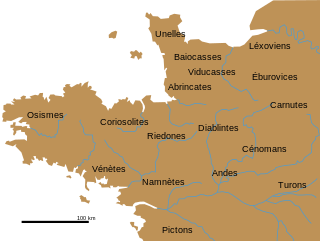 W
WThe Viducasses were a Gallic tribe of Gallia Lugdunensis.
 W
WThe Viromandui or Veromandui were a Belgic tribe of the La Tène and Roman periods, dwelling in the modern Vermandois region (Picardy).